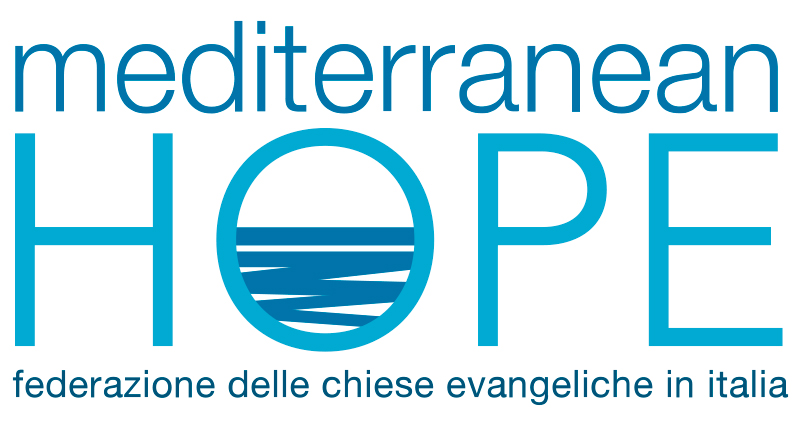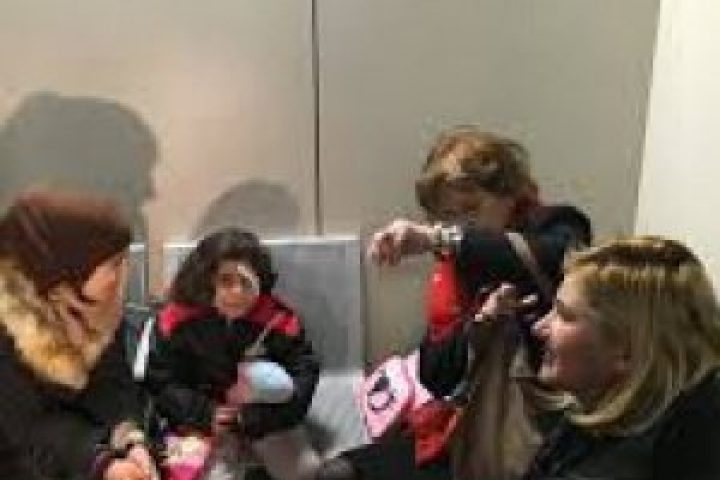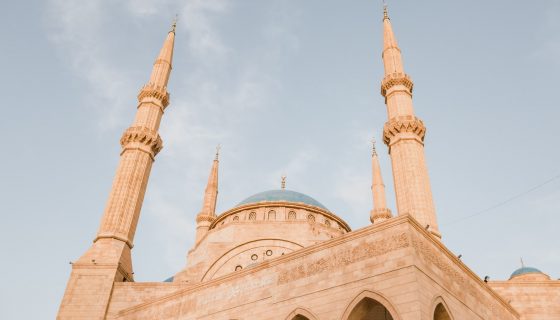- Mediterranean Hope - Federazione delle chiese evangeliche in Italia
- mh@fcei.it
Refugees Arriving by Plane: The Pilot Project for Humanitarian Corridors
Andrea Scutella – La Repubblica
ROME – “I’m happy”. Yasmine’ smile said more than her words: she was more than happy, she was cheerful. Yasmine and her family entered the control doors of Fiumicino airport: her husband Suleyman, 34, and their son Hussein, holding a toy bunny and showing it to the reporter. But the star was Falak: the 6-year-old little girl that has lost one of her eyes due to a cancer but the other eye can be saved. The staff of the Bambin Gesù Hospital will try to save Falak’s eye and then she will start a chemotherapy treatment. Yasmine, Falak, Suleyman and Hussein are from Homs, the city from which they fled two years ago. Since then, they have been living in Tripoli. They are the first Syrian refugees to benefit from the pilot project of humanitarian corridor launched by FCEI and the Community of Sant’Egidio supported by the eight per thousand of the Waldensian church. Yasmine smiled and sang with an almost perfectly accented Italian: “Sono un italiano, un italiano vero” (“I’m an Italian, a true Italian”, a Toto Cotugno’s song)
High Priority to the most vulnerable. 1000. That is the number of people established for this project which belongs to the Mediterranean Hope program promoted by FCEI. Just one drop in the sea if compared to one million refugees who reached the shores of Europe in 2015 and to the 3,771 people that perished at sea. 86 refugees should arrive by plane from Lebanon by the end of February, while the agreements with Morocco and Ethiopia are under finalisation. The applicants will be chosen based on the vulnerability of their situations with absolute priority to disabled/ill people, women and children with critical situations.
A pilot project, also political. “This is a pilot project, but it is also a very political project as it showed that the civil society can play a role where the European governments failed. It could be possible to manage the drama of refugees in a democratic and pragmatic way avoiding people perishing at sea and avoiding traffickers thriving on immigrants ” Francesco Piobbichi said – the MH operator that accompanied Yasmine and her family to Italy. “We need to find alternative ways to traffickers. This humanitarian corridor is also intended as an initiative that would encourage countries and other organisations to do the same,” Cesare Zucconi from the Sant’Egidio Community said. “Moreover, these people will be identified before leaving after carrying out fingerprinting procedures and confirming their names.”
A garage in Tripoli outskirts for 200 dollars per month. Identify possible applicants means to find out vulnerable situations. “It is a choice that I can understand well – Piobbichi explained – because I have been working in Lampedusa for two years and I know what is the Mediterranean Sea now.” Falak’s family was introduced to the Mediterranean Hope team thanks to an association contacted by Falak’s uncle who landed in Lesbos. The man told the story of his niece who had lost one of her eyes and risked losing the other one and that the little girl and her family had been living in a garage in the outskirts of Tripoli, rented for 200 dollars per month. In Lebanon, Falak, could not receive the necessary medical care. These are common stories for those who are fleeing from a devastating war. “One of Falak’s class mate – Piobbichi said – lost one of his leg due to a bomb. In Lebanon, there are many of such stories. Lebanon is a country with four million inhabitants and two million refugees. ” Even Piobbichi is tired, but he is happy just like Yasmine. “We had some issues with the Lebanese authorities that detained Falak’s father until last night; we thought that we would not be able to bring him but we did it. At 9.30 pm I used my smartphone to book his ticket from a cafeteria in Beirut “.





